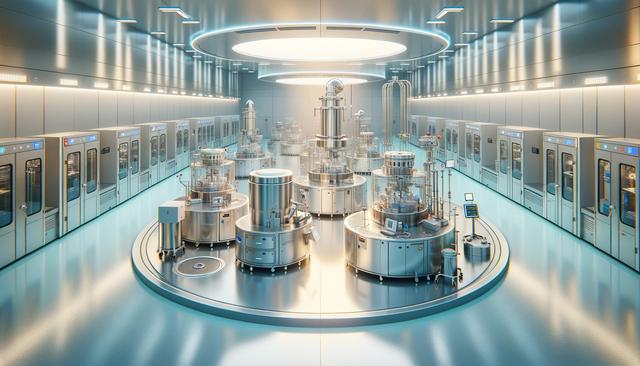ISO Standards and Compliance in European Cleanrooms
Across Europe, cleanroom environments are essential for maintaining strict hygiene and contamination control in pharmaceutical and biotechnology sectors. ISO cleanrooms in Germany, France, and other countries are built to comply with ISO 14644 standards, which define the classification of air cleanliness by particle concentration. These standards guide the design and operation of cleanroom environments, ensuring they meet the specifications required for pharma and lab applications.
For a facility to remain compliant, several elements must be addressed during the design phase:
- Controlled air filtration and circulation systems
- Use of certified cleanroom equipment
- Proper zoning to separate clean and less clean areas
- Routine monitoring and validation processes
Whether in a pharma lab setup in Switzerland or a biotech cleanroom in Europe, adherence to ISO norms is a critical benchmark for operational safety and efficiency. These regulations not only enhance product safety but also help laboratories and pharma manufacturers meet regulatory requirements set by European health authorities.
Advanced Cleanroom Equipment Across Switzerland and Beyond
Cleanroom equipment in Switzerland and neighboring countries supports a wide range of functions, from environmental monitoring to operator safety and sterile work processes. Facilities in cities like Zurich often invest in cleanroom solutions that include laminar flow units, isolators, pass-through systems, and containment enclosures. These components are vital to reducing particulate contamination and maintaining sterility.
Many pharma cleanroom setups in Europe also rely on modular cleanroom systems, which offer flexibility and scalability. This is particularly beneficial for biotech companies and research institutions that may need to adapt or expand their operations. Cleanroom solutions in Zurich and elsewhere are typically integrated with:
- HEPA filtration systems
- Antimicrobial surfaces and furnishings
- Hands-free operation points to reduce contact-based contamination
Investment in the right equipment ensures seamless operations and helps prevent downtime due to contamination incidents or compliance failures.
Airflow and HVAC Strategies in Pharma Facilities
Proper airflow management is a cornerstone of cleanroom design, particularly in pharmaceutical environments where product purity is non-negotiable. Facilities in Belgium, for example, often employ specialized pharma HVAC systems designed to regulate temperature, humidity, and air exchange rates while maintaining positive or negative pressure zones as needed.
Key components of effective HVAC systems in cleanrooms include:
- High-efficiency air handling units
- Continuous air filtration and recirculation
- Pressure differential monitoring between rooms
- Integration with building management systems for real-time control
Pharma HVAC in Belgium and other European countries must also comply with Good Manufacturing Practice (GMP) guidelines. These systems are designed not just for environmental control but also for energy efficiency and long-term sustainability. This is especially significant given the growing emphasis on eco-conscious facility design in the biotech and pharma sectors.
Regional Variations in Cleanroom Design and Application
While the principles of cleanroom design remain consistent, regional variations do exist based on local regulations, climate conditions, and the specific needs of the facility. In France, for instance, cleanroom design often emphasizes energy-efficient technologies due to the country’s strong environmental policies. Cleanroom facilities in Germany typically focus on precision engineering and automation, aligning with the country’s industrial strengths.
Meanwhile, lab cleanroom solutions in the Netherlands are frequently found in research-heavy institutions and biotech incubators, where flexibility and speed of setup are high priorities. These cleanrooms often incorporate:
- Quick-assembly modular walls
- Mobile cleanroom units
- Customizable filtration systems
By understanding these regional nuances, companies can better tailor their cleanroom investment to meet both regulatory and operational goals. Whether planning a pharma lab setup in Switzerland or upgrading facilities in the Netherlands, localized expertise can make a significant difference in project success.
Future Trends in Biotech and Pharma Cleanroom Solutions
As the biotech and pharmaceutical industries continue to evolve, cleanroom technology is advancing to meet new challenges. Innovations in automation, data monitoring, and contamination control are reshaping how cleanrooms are conceptualized and operated. In Europe, there’s a growing trend toward integrating smart technologies into cleanroom environments to improve efficiency and traceability.
Some of the emerging trends include:
- IoT-enabled sensors for real-time environmental monitoring
- Automated cleaning and disinfection systems
- Augmented reality tools for operator training and maintenance
Biotech cleanrooms in Europe are also seeing increased demand for adaptability. Facilities are being designed with future-proofing in mind, allowing for rapid reconfiguration to accommodate new processes or production lines. This is particularly relevant in the context of personalized medicine and advanced therapy medicinal products (ATMPs), where production needs can change rapidly.
Conclusion: Building Cleanroom Success Across Europe
Establishing compliant, efficient, and future-ready cleanroom environments is crucial for pharmaceutical and biotech operations throughout Europe. From cleanroom equipment in Switzerland to pharma HVAC systems in Belgium, the region offers a wide array of specialized solutions tailored to meet stringent ISO standards and local regulations.
By understanding the unique requirements of each country—whether it’s the modular cleanroom needs in the Netherlands or the energy-efficient designs in France—organizations can make informed decisions that enhance both compliance and productivity. Cleanroom systems are not one-size-fits-all, and choosing the right components and partners is essential for long-term success in the pharma and lab industries.




Leave a Reply